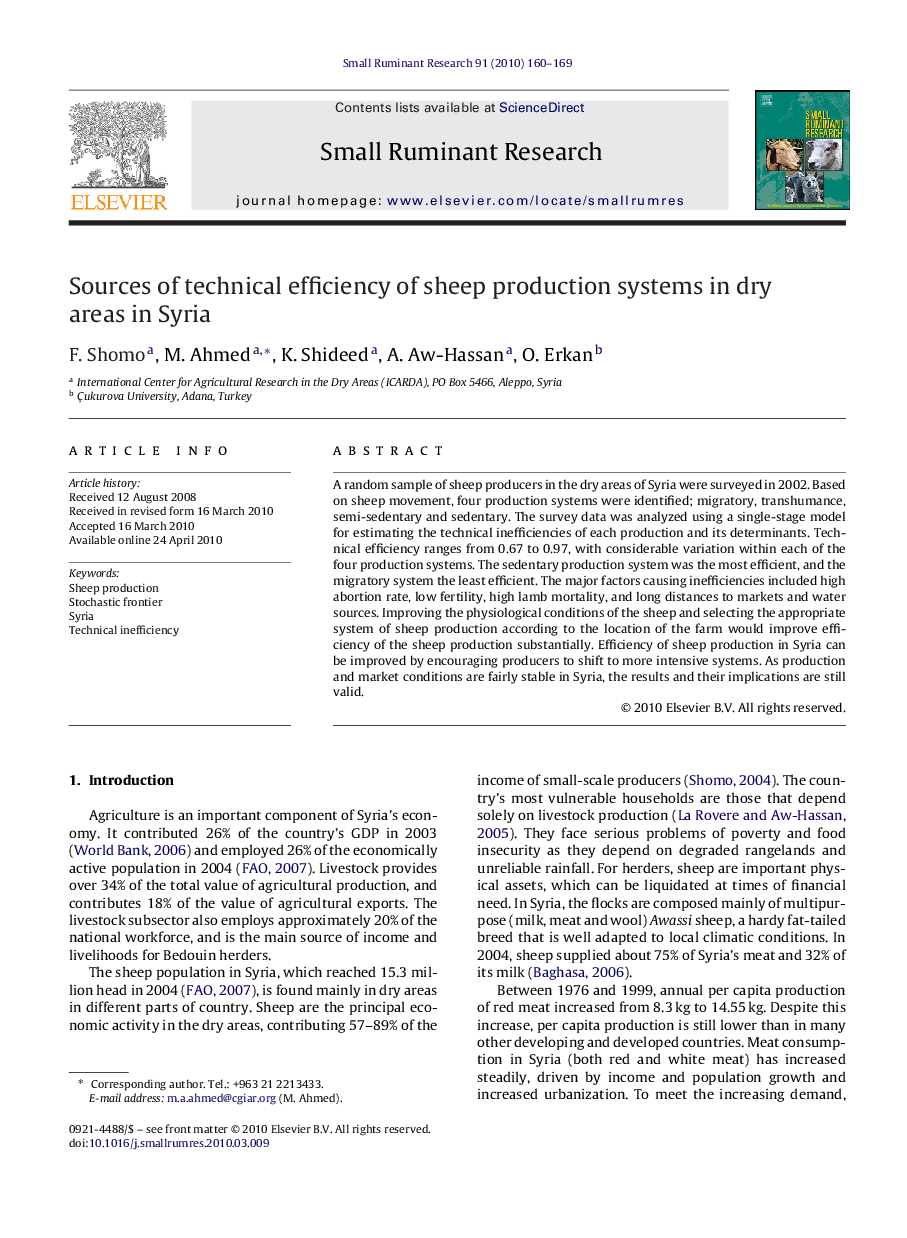| Article ID | Journal | Published Year | Pages | File Type |
|---|---|---|---|---|
| 2457430 | Small Ruminant Research | 2010 | 10 Pages |
A random sample of sheep producers in the dry areas of Syria were surveyed in 2002. Based on sheep movement, four production systems were identified; migratory, transhumance, semi-sedentary and sedentary. The survey data was analyzed using a single-stage model for estimating the technical inefficiencies of each production and its determinants. Technical efficiency ranges from 0.67 to 0.97, with considerable variation within each of the four production systems. The sedentary production system was the most efficient, and the migratory system the least efficient. The major factors causing inefficiencies included high abortion rate, low fertility, high lamb mortality, and long distances to markets and water sources. Improving the physiological conditions of the sheep and selecting the appropriate system of sheep production according to the location of the farm would improve efficiency of the sheep production substantially. Efficiency of sheep production in Syria can be improved by encouraging producers to shift to more intensive systems. As production and market conditions are fairly stable in Syria, the results and their implications are still valid.
